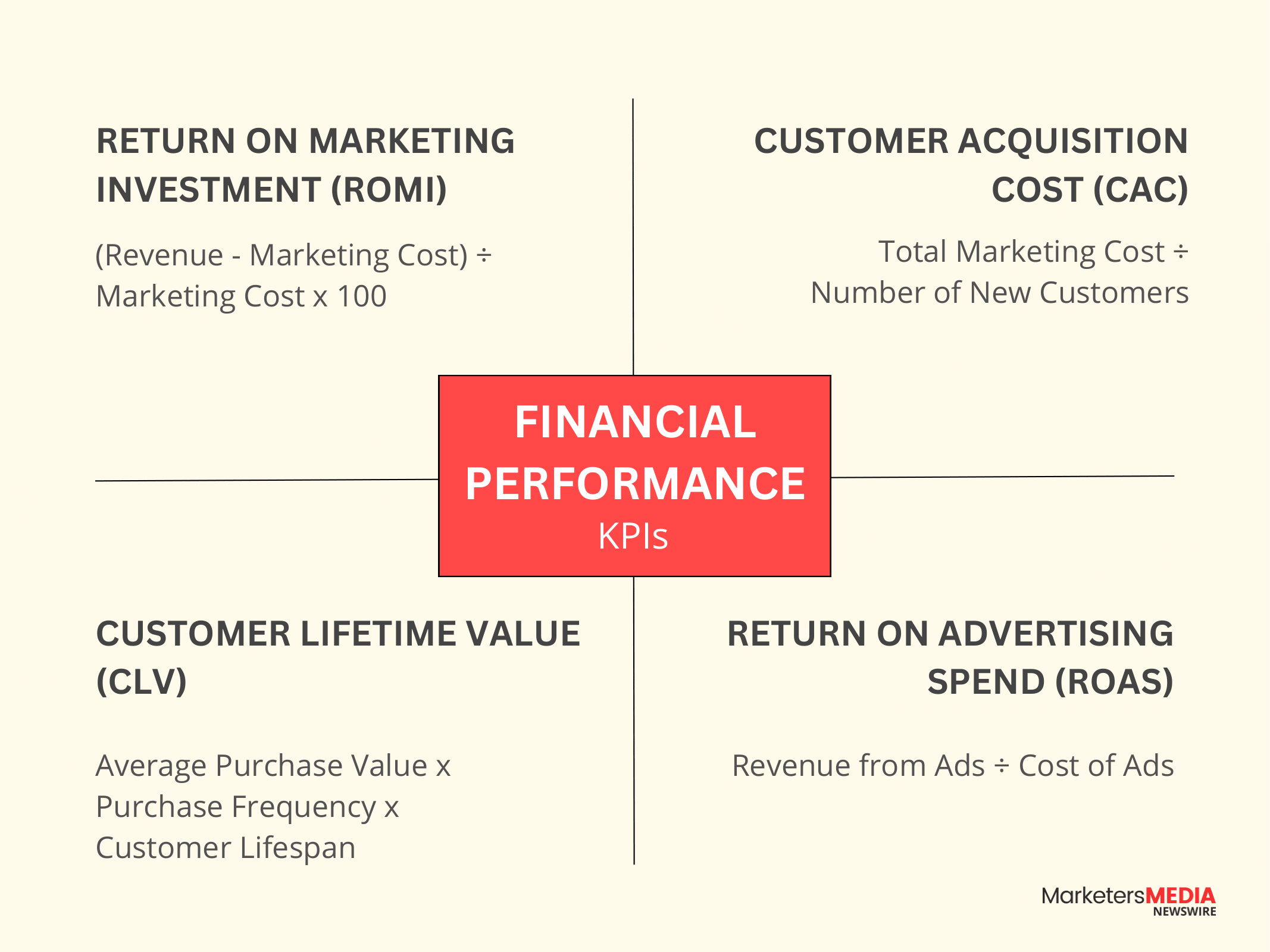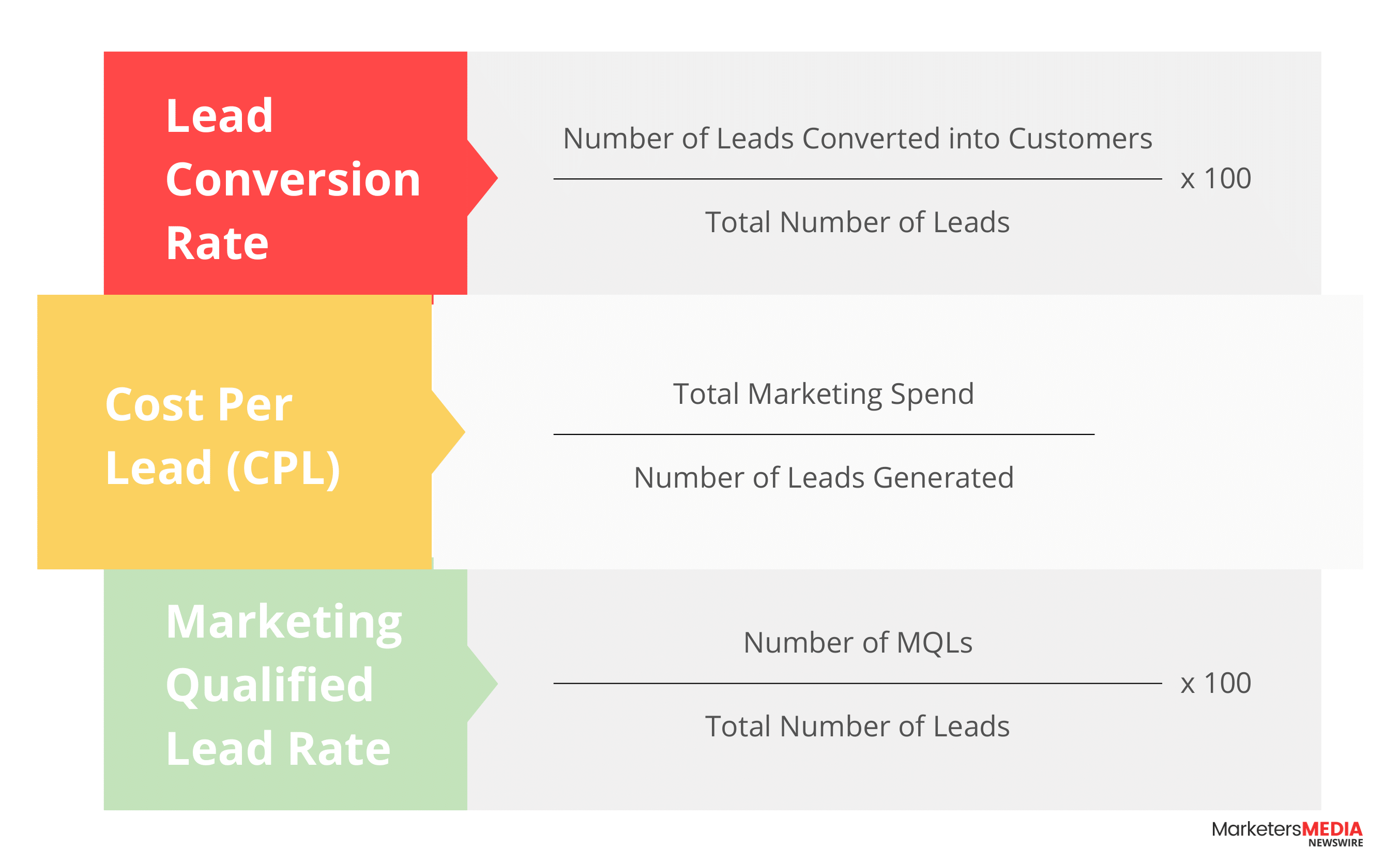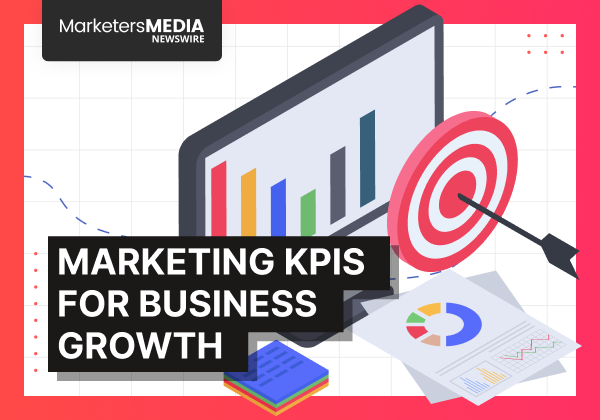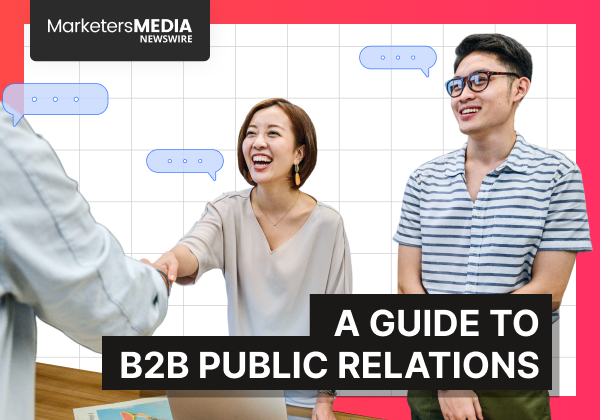Marketing teams collect data constantly. Website visits, social followers, email opens, ad clicks. The numbers pile up in dashboards and reports.
But most of this data tells you nothing about business success.
The problem isn't the quantity of data. It's the quality of measurement. Too often, teams measure what looks good on paper but fails to tie back to growth, revenue, or strategy.
This guide breaks down which marketing KPIs actually matter, how to pick the right ones for your goals, and the traps that waste time and budget.
What Are Marketing KPIs
Marketing KPIs vs. Metrics vs. Goals
A Key Performance Indicator (KPI) measures progress toward a specific business objective. Not every data point in your analytics platform qualifies.
- Metrics track activity: Website sessions, email subscribers, social media followers.
- KPIs track outcomes: Customer acquisition cost, marketing ROI, lead conversion rate.
- Goals define what you want: Increase revenue by 25%, reduce customer churn to under 5%, expand into new markets.
The relationship flows like this: Goals define what you want to accomplish. KPIs measure progress toward those goals. Metrics provide the underlying data that feeds into KPIs.
Most marketing teams make three fundamental mistakes:
- Measuring everything instead of what matters. They track 50+ metrics because the data exists, not because it informs decisions.
- Confusing activity with progress. Social media impressions might look impressive, but they don't indicate business growth.
- Failing to connect measurement to strategy. KPIs that don't link to business objectives become vanity metrics.
Clarity about the outcome you want is always step one.
How to Choose Marketing KPIs to Measure
Effective KPI selection follows a simple hierarchy. Start with business objectives, then identify the key activities that drive those outcomes.
#1 The SMART KPI Standard
Every marketing KPI should meet five criteria:
- Specific: Clearly defined with no ambiguity
- Measurable: Backed by data you can track
- Attainable: Realistic given your resources
- Relevant: Directly connected to business objectives
- Time-bound: Tied to a specific timeframe
"Increase brand awareness" fails this test. "Increase branded search volume by 30% in Q1" passes.

#2 Adjust for Business Model
Not all companies measure success the same way.
B2B Marketing KPIs focus on relationship-building and longer sales cycles:
- Marketing Qualified Leads (MQLs)
- Sales Qualified Leads (SQLs)
- Pipeline velocity
- Account engagement scores
B2C Marketing KPIs emphasize transaction volume and customer behavior:
- Customer acquisition cost
- Average order value
- Repeat purchase rate
- Shopping cart abandonment rate
B2B deals take time and multiple approvals. B2C decisions happen faster, often in one session. Your KPIs should reflect that difference.
Essential Marketing KPIs by Category
Financial Performance KPIs
These metrics directly connect marketing activities to revenue impact.
- Return on Marketing Investment (ROMI): Shows how much revenue your marketing generates. A 400% ROMI means every $1 spent returns $4.
- Customer Acquisition Cost (CAC): Reveals how much it costs to win each customer. Useful for comparing channels and optimizing spend.
- Customer Lifetime Value (CLV): Estimates how much revenue a customer brings over their relationship with your company.
- Return on Advertising Spend (ROAS): ROAS measures the effectiveness of paid advertising campaigns. Different from ROMI because it focuses specifically on advertising rather than all marketing activities.

Lead Generation KPIs
These show how efficiently marketing turns interest into revenue.
- Lead Conversion Rate: Tracks how well leads move through the funnel into paying customers.
- Cost Per Lead (CPL): Helps compare which channels or campaigns bring in leads at the lowest cost.
- Marketing Qualified Lead Rate: Measures the percentage of leads that meet criteria for handoff to sales.
Digital Marketing KPIs
These reflect how digital channels perform.
- Organic Search Traffic Growth: Measures the increase in website visitors from search engines over time, a direct sign of SEO and content performance.
- Conversion Rate by Channel: Reveals which traffic sources deliver the best results.
- Website Engagement Metrics: Time on page, pages per session, and bounce rate highlight how effective content and design are at holding attention.

Content Marketing KPIs
These metrics indicate content quality and user experience effectiveness.
- Content Engagement Rate: Measures how actively your audience interacts with your content across platforms. [Formula: (Likes + Comments + Shares) ÷ Total Followers x 100]
- Lead Generation by Content Type: Track which content formats (blog posts, whitepapers, videos) generate the most qualified leads.
- Content Attribution to Revenue: Connect content consumption to eventual purchases using attribution modeling.
Email Marketing KPIs
Email remains one of the most measurable channels.
- Email Open Rate: Industry benchmarks vary by sector, but average open rates range from 15-25%.
- Click-Through Rate (CTR): CTR indicates how compelling your email content and calls-to-action are to recipients.
- Email Revenue Attribution: Track how much revenue comes from email campaigns to justify program investment.
Customer Retention KPIs
Acquiring new customers can cost five to twenty-five times more than keeping existing ones. Retention KPIs show how well you maintain relationships and protect recurring revenue.
- Customer Retention Rate: Formula: [(Customers at End - New Customers) / Customers at Start] x 100
- Net Promoter Score (NPS): Measures customer satisfaction and likelihood to recommend your company.
- Churn Rate: Reveals how many customers stop doing business with you. [Formula: (Customers Lost / Total Customers) x 100]
How to Implement Marketing KPIs
Step 1: Start with Business Objectives
Don't begin with available data. Start with what your business needs to achieve, then work backward to identify the metrics that best indicate progress.
Step 2: Apply the Strategic Filter
For every potential KPI, run it through these questions:
- Does it connect directly to a business objective?
- Can we act on this metric when it changes?
- Who owns this metric and its improvement?
- What’s the response plan if this metric goes up or down?
Step 3: Limit Your Focus
Track fewer metrics more deeply rather than many metrics superficially. Most successful companies focus on 3-5 primary KPIs per department.
Step 4: Build Accountability Systems
Assign clear ownership for each KPI. Define what success looks like and what actions you'll take when metrics move in either direction.
Step 5: Review and Adjust Regularly
Markets move. Customer behavior evolves. Strategy changes. Revisit your KPIs at least quarterly to confirm they still align with priorities.
Wrapping It Up
The measurement environment is only getting tougher. Privacy rules, shifting consumer habits, and more channels make attribution harder every year.
The edge won’t come from tracking more. It will come from tracking the right metrics with precision and acting on them with speed.
Start by auditing your current KPI set:
- Which metrics shape real decisions?
- Which sit in reports without impact?
- Which tie directly to business objectives?
Cut the metrics that don't matter. Double down on the ones that drive real business impact.
Your goal isn't perfect measurement. It's strategic clarity that enables faster, better business decisions.
The companies that win in the next decade will be those that turn data overwhelm into strategic focus – measuring less, but measuring what matters.
Frequently Asked Questions (FAQ)
Q: What is the fundamental difference between B2B and B2C marketing KPIs?
A: B2B KPIs focus on relationship-building and lead qualification (e.g., MQLs) due to a long sales cycle. B2C KPIs emphasize transaction volume and customer behavior (e.g., Average Order Value) due to a shorter, emotion-driven sales process.
Q: What is marketing attribution, and why is it essential for MROI?
A: Attribution is the process of assigning conversion credit to each customer touchpoint (e.g., ad, blog, email). It’s essential for MROI (Return on Marketing Investment) because it ensures your calculation is accurate by correctly measuring the return generated by specific marketing efforts.
Q: What is the biggest, non-technical mistake companies make with KPIs?
A: The most significant error is failing to link KPIs directly to the overarching business strategy. If a KPI isn't tied to what the business is trying to achieve, it becomes irrelevant data that wastes time and resources.
Q: How does "Intent Data" help B2B marketers, and why is it important?
A: Intent Data captures behavioral signals to show if a prospect is "in-market" and actively ready to buy. It helps B2B marketers prioritize accounts that are closest to a decision, improving lead quality and sales efficiency.
Q: What is the SMART framework, and why must a KPI adhere to it?
A: SMART ensures a KPI is Specific, Measurable, Attainable, Relevant, and Time-Bound. This structure is required to make the KPI actionable, quantifiable, and directly linked to a business outcome.
Free Press Release Template
Tell us where to send your PDF:








